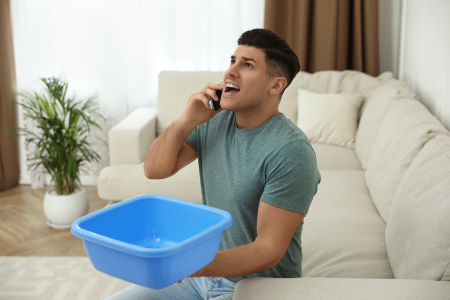One of the most stressful things a homeowner can experience is a sudden home repair. Problems like a leaking roof, a broken HVAC system, or a plumbing problem might sidetrack daily life and wreak havoc on your finances.
While it is overwhelming to find yourself in these situations, having a plan can help. The right approach can make even the most daunting repair bills manageable.
Build an Emergency Fund
Christine Luken, an author and personal finance blogger, learned the importance of an emergency fund the hard way. “Before I had an emergency fund, if I had an unexpected car repair or a vet bill, I had two problems,” she says. “The original emergency and a money problem.” Those experiences made her realize that the unexpected can happen at any time.
An emergency fund brings peace and stability to finances by never letting home repairs, even the emergency kind, overtake your pocket. This helps you take care of repairs and keep an eye on your household budget.
A practical way to save for repairs is to put a “home repair” category in your monthly budget. Setting aside a certain monthly amount, for example, $200, will help prepare you for minor issues. If you do not use the money in one month, you can roll it back into your savings or reallocate it to other costs.
Moreover, you will need a dedicated emergency fund for a more sizeable, unexpected cost. This fund can help cover the cost of that significant repair without changing the rest of your financial plan. After the fund is stretched to use, putting a temporary hold on non-essential savings, like vacations and luxury spending, supports you in rebuilding the fund steadily in the ensuing months.
Use Personal Loans or Credit Cards for Smaller Repairs
Some minor home repairs can be sudden; sometimes, there is no time to save. In these situations, personal loans or credit cards can be a practical way to access the necessary funds and fix the problem immediately. Both options tell you exactly how much you must repay each month, helping you create a more manageable budget.
Homeowners applying for personal loans or setting up credit card payments should ensure their banking details are accurate through bank verification. This process confirms that your account details are correct, funds will be deposited promptly, and payments will be processed smoothly.
Explore different lenders or other credit card options to find the best terms. There are many providers, but shopping competitive rates and rewards programs can help you.
Leverage a Home Equity Loan
Another popular option is to tap into your home equity for more significant, expensive repairs. A home equity loan is funded by the difference between your home’s worth and any other debts you owe to various lenders.
This is the best choice for homeowners with equity who can follow an applicable repayment plan. But please weigh the possible risks. For example, foreclosure is a possibility if payments on borrowing against your home are unmet. The smart and cost-effective way here is to carefully evaluate your budget and ensure the loan amount is within your financial means.
Consider a Home Equity Line of Credit (HELOC)
Homeowners can be shielded from the uncertainty or spread of costs by using a HELOC to finance home repairs. Unlike a regular home equity loan, a HELOC is much like a standard revolving line of credit. You get what you need when you need it, up to a preapproved limit, and you can borrow it without a hard credit check. That will work for projects where there will be extra funds in the future, like phased renovations and repairs.
One of HELOC’s most significant advantages is its flexibility. The amount you must repay depends on the amount you borrow, so it is a cheap option if you do not want to take out more than you need.
Using and repaying the borrowed amount correctly guarantees a pleasant experience. You stay in control of your finances by setting up a repayment schedule that does not jeopardize your regular expenses and simultaneously covers your home repair needs.
Research Government Assistance Programs
Government financial assistance programs exist to help homeowners pay repair costs, but, unfortunately, these are often overlooked. Grants, affordable loans, and energy-efficient upgrade programs are available at the governmental, state, and federal levels. These programs can ease the financial pain of qualifying households.
Some are geared towards low-income families, and others concentrate on repairs such as weatherproofing or safety upgrades. Researching what is available in your area can uncover valuable opportunities. While these programs do not cover the full cost of the repairs, they can make the costs much more manageable, often on an affordable scale—for those with financial difficulties.
Conclusion
Home repair crises are a natural part of homeownership, but they do not have to ruin your finances. Getting tools to tackle these problems effectively includes building an emergency fund, researching available assistance programs, and checking for financing options such as personal loans or home equity solutions. Being proactive and informed can move an extreme financial drain into the category of “manageable expenses.” Today, preparation can lead to fewer sleepless nights if the inevitable surprise repair comes out of nowhere.

